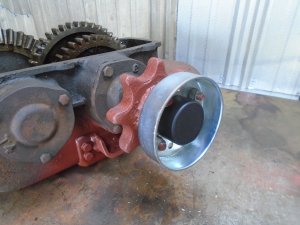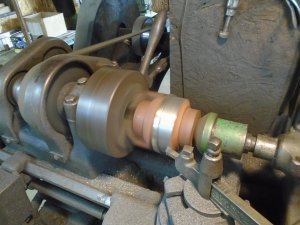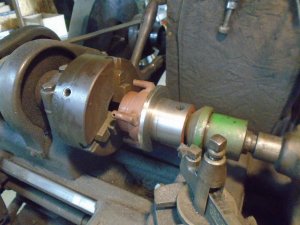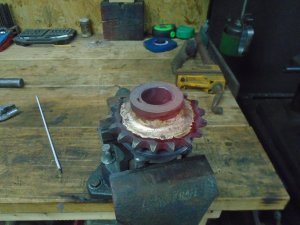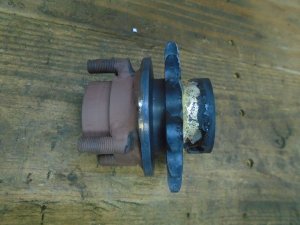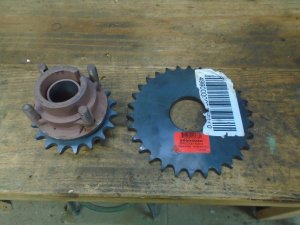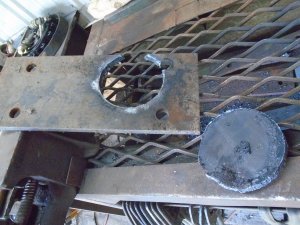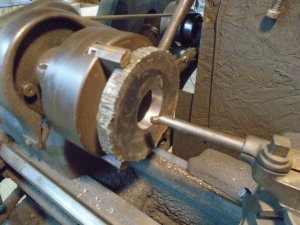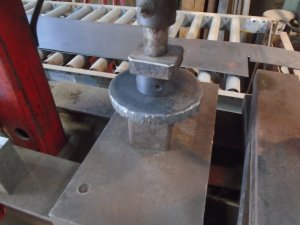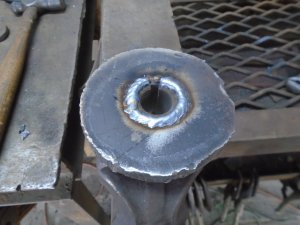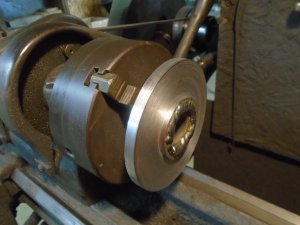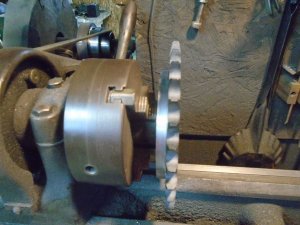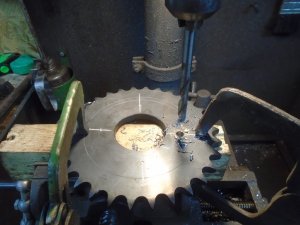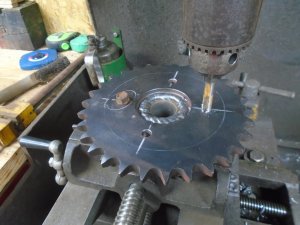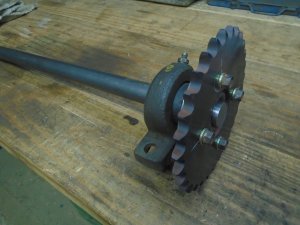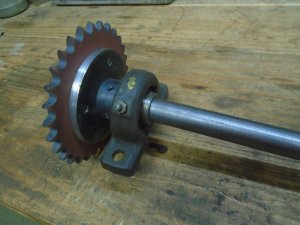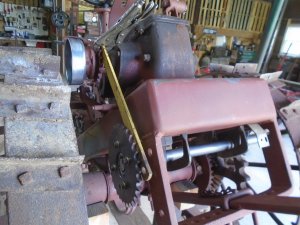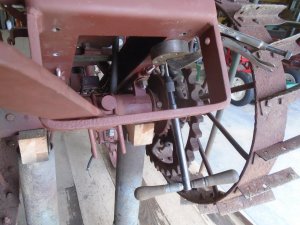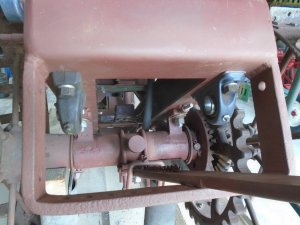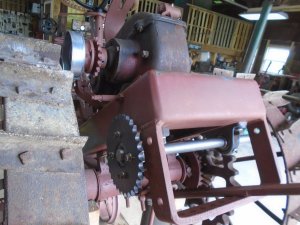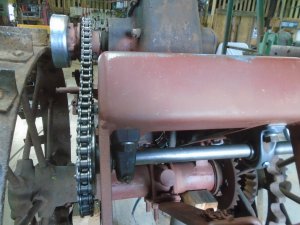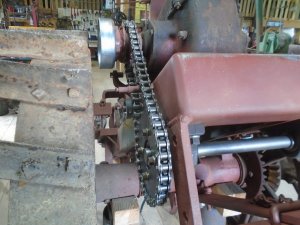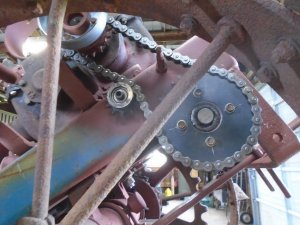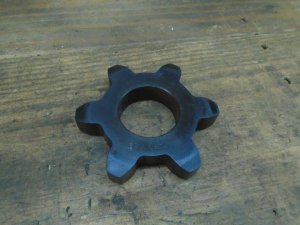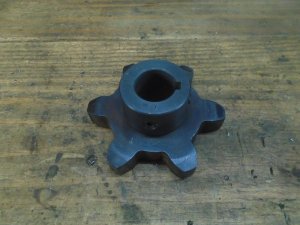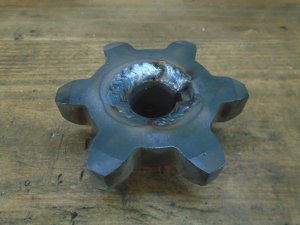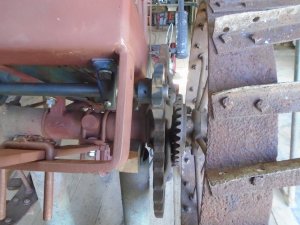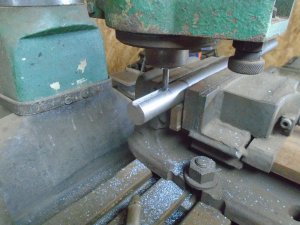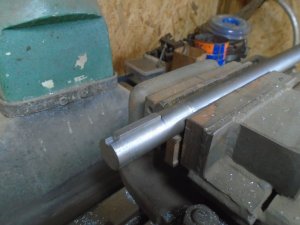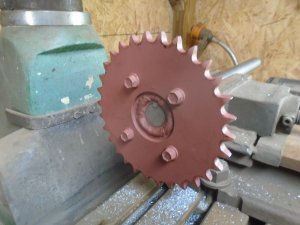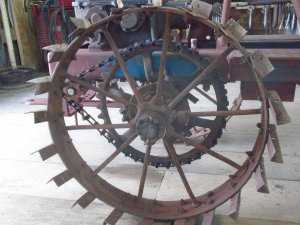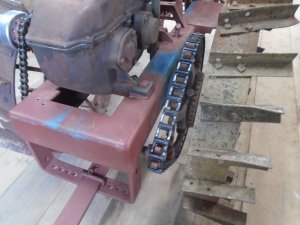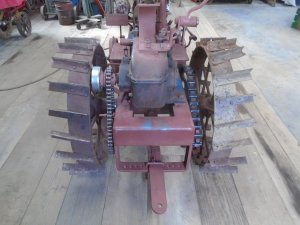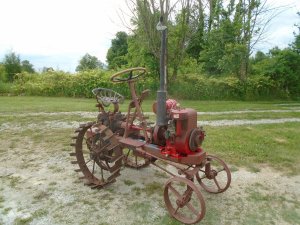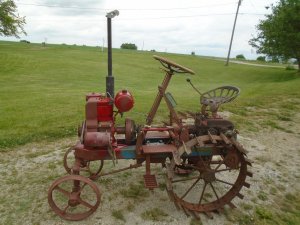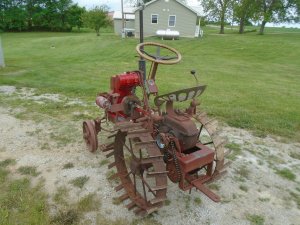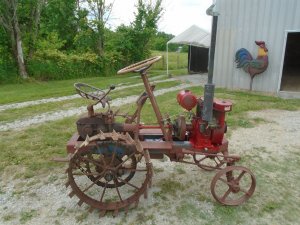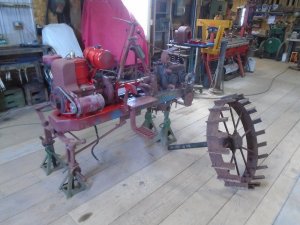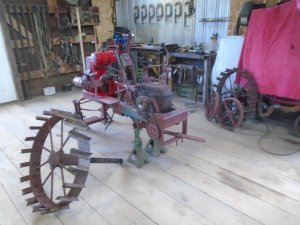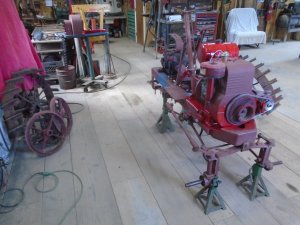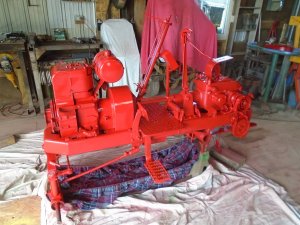I have never run into this difference in the RPM between the two engines before and it has made me do a lot of thinking about the best way to solve the problem.
I know in my gut that dropping two teeth off the drive sprocket is not going to lower the ratio enough for me to be satisfied with it.
So I have decided to go ahead with the jack shaft to reduce the final drive.
The #50 chain sprocket will go on this hub that mounts on the transmission.
This sprocket and hub is cast iron and is all one unit so the only way to separate the sprocket from the hub is to cut the sprocket off.
Even if I had decided to use a jack shaft right from the beginning, I would still have had to get another detachable chain sprocket because this one is going to be destroyed.
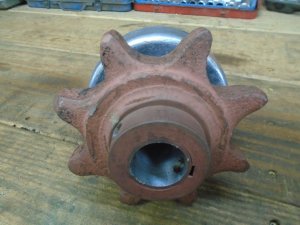
Obviously, there isn't enough room to fit a jack shaft in between the transmission and the wheel so I'm going to switch the drive wheel sprocket over to the other side of the tractor.
The tractor is again hoisted up onto the stands and the wheel has been removed from the left side.
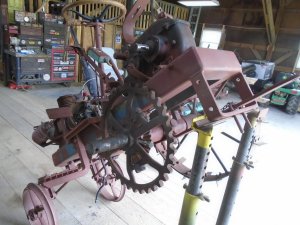
The sprocket and inside gear are then removed.
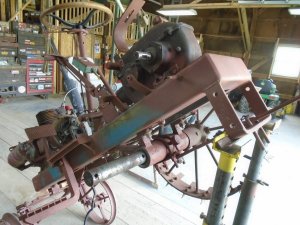
Using my lift cart to support the right wheel, I pull it and the axle shaft out away from the axle housing.
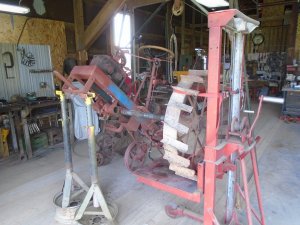
Then I bring it around and slide it back into the other side.
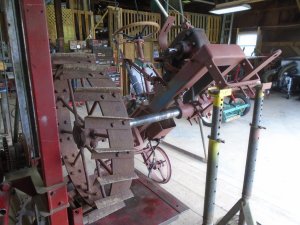
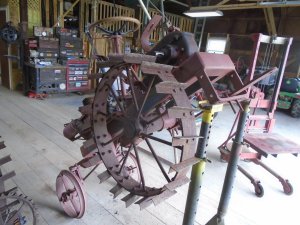
The gear and sprocket are mounted back on the axle on the right side now.
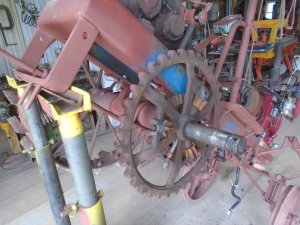
And the wheel is put back on.
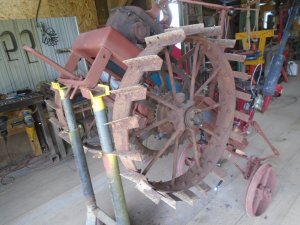
Back over on the left side ... there is now room to bring the #50 chain down from the transmission to a jack shaft that will run across under the frame and in front of the draw bar support bracket.
The #50 chain will be completely enclosed in a sheet metal housing.
The band brake and it's linkage stays right where it is and doesn't have to be changed at all.
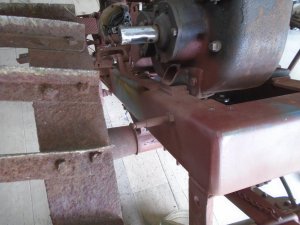
On the right side ... the new 6 tooth detachable chain sprocket will be on this end of the jack shaft with the big open chain running to the drive sprocket.
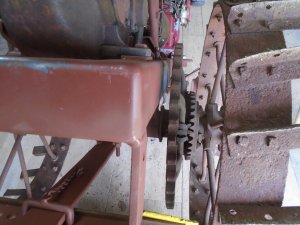
I know in my gut that dropping two teeth off the drive sprocket is not going to lower the ratio enough for me to be satisfied with it.
So I have decided to go ahead with the jack shaft to reduce the final drive.
The #50 chain sprocket will go on this hub that mounts on the transmission.
This sprocket and hub is cast iron and is all one unit so the only way to separate the sprocket from the hub is to cut the sprocket off.
Even if I had decided to use a jack shaft right from the beginning, I would still have had to get another detachable chain sprocket because this one is going to be destroyed.

Obviously, there isn't enough room to fit a jack shaft in between the transmission and the wheel so I'm going to switch the drive wheel sprocket over to the other side of the tractor.
The tractor is again hoisted up onto the stands and the wheel has been removed from the left side.

The sprocket and inside gear are then removed.

Using my lift cart to support the right wheel, I pull it and the axle shaft out away from the axle housing.

Then I bring it around and slide it back into the other side.


The gear and sprocket are mounted back on the axle on the right side now.

And the wheel is put back on.

Back over on the left side ... there is now room to bring the #50 chain down from the transmission to a jack shaft that will run across under the frame and in front of the draw bar support bracket.
The #50 chain will be completely enclosed in a sheet metal housing.
The band brake and it's linkage stays right where it is and doesn't have to be changed at all.

On the right side ... the new 6 tooth detachable chain sprocket will be on this end of the jack shaft with the big open chain running to the drive sprocket.


